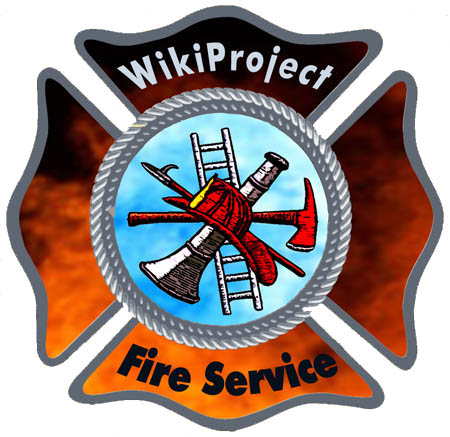Dr. Kimberly Bates and her students (or her students in the class of 1998, it’s not clear how often it’s been updated), have a helpful set of parasitology images, including this one [singlepic=53,320,240,,] of Naegleria Fowleri (see previous post).
Author Archives: Jon
WingmanX: NASA now permitting surgically corrected vision
According to the genetically gifted Wingman X, NASA is now permitting surgically corrected vision
– that is, if your 20/20 is the result of corrected vision – no problem from NASA.
The first person I met who I knew had the surgery went on to become a Port Authority police officer (for you out-of-towners – the Port Authority “of New York and New Jersey”) owns the NYC and Newark Airports, bus terminals, ports, and the World Trade Center – they have their own police force – I’m guessing about 1,500 sworn personnel). He or she had the surgery, become a cop – a damned good one, too. Don’t know if it was permissible then – hence the elliptical reference which might otherwise lead to identification.
Disclosure of interest: I took the NYPD test, and scored about the same as I did on the LSAT – but the law school people didn’t give me an eye exam.
From WingmanX
– scourge of evil, airborne and elsewhere.
CDC reports spike in deaths from amoeba in lakes and streams
According to Chris Kahn, of the Associated Press, (Yahoo! News article here):
A killer amoeba living in lakes enters the body through the nose and attacks the brain where it feeds until you die.
Even though encounters with the microscopic bug are extraordinarily rare, it’s killed six boys and young men this year. The spike in cases has health officials concerned, and they are predicting more cases in the future.“This is definitely something we need to track,” said Michael Beach, a specialist in recreational waterborne illnesses for the Centers for Disease Control and Prevention.
“This is a heat-loving amoeba. As water temperatures go up, it does better,” Beach said. “In future decades, as temperatures rise, we’d expect to see more cases.”
According to the CDC, the amoeba called Naegleria fowleri (nuh-GLEER-ee-uh FOWL’-erh-eye) killed 23 people in the United States, from 1995 to 2004. This year health officials noticed a spike with six cases — three in Florida, two in Texas and one in Arizona. The CDC knows of only several hundred cases worldwide since its discovery in Australia in the 1960s.
Searching for funding – first steps
Searching the Responder Knowledge Base, and even logging in as a guest (some of the restricted material won’t show up), for every piece of equipment – or category of equipment – the RKB will list the relevant grants. Or – find a grant program – and you can generate a list of allowable equipment purchases under that grant. Here’s an example:
This page, “Responder Knowledge Base – Grants and Assistance Programs Detaila – FY07 Urban Areas Security Initiative (UASI) program,” provides that states are the eligible grant-seekers – although not the only ultimate recipients of funds:
The program assists Urban Areas in building and sustaining capabilities to prevent, protect against, respond to, and recover from threats or acts of terrorism.
The FY 2007 UASI program provides the opportunity to enhance regional preparedness efforts. Urban Areas must employ regional approaches to overall preparedness and are encouraged to adopt regional response structures whenever appropriate to meet the goals identified in the Urban Area Homeland Security Strategy and common, measurable objectives. Security and preparedness officials at all levels should seek opportunities to leverage funding from multiple sources whenever possible and not restrict their activities to Federal funding alone. UASI funding will be provided to identified Urban Area authorities through the SAAs. In some instances Urban Area boundaries cross State borders. States must ensure that the identified Urban Areas take an inclusive regional approach to the development and implementation of the FY 2007 UASI program and involve the contiguous jurisdictions, mutual aid partners, port authorities, rail and transit authorities, State agencies, Citizen Corps Council(s), and MMRS
(s) in their program activities.
FEMA “Clarification on Community Emergency Response Team (CERT) Training;”
In a memo dated August 2, 2007. Corey Gruber, Acting Deputy Administrator, National Preparedness Directorate of FEMA, wrote
This Information Bulletin (IB) is to clarify that Homeland Security Grant Program (HSGP) funds are allowable to support and deliver the following training:
• Community Emergency Response Team (CERT) basic training for volunteers in eighborhoods, schools, campuses, workplaces, and all other venues determined by the agency that sponsors the local CERT Program
• Supplemental training for CERT members who have completed the basic training
• CERT Train-the-Trainer course
• Campus CERT Train-the-Trainer course
• Teen CERT Train-the-Trainer course
Contest: How would you set up an emergency response team?
You’ve put out a call for volunteers for your brand-new local emergency response organization. It’s so new that you don’t even have a name yet.Follow past the jump for more details and the prizes.
Brooklyn Heights Blog – new and welcome addition to our blog roll
We’ve added another local blog – Brooklyn Heights Blog
– to our blogroll. Welcome!
All-Med Hi-Viz Rescue Vest
ALLMED , based in Russellville, Missouri, sells a range of EMS – and a few products designed in-house. One of these is their high-visibility vest, pictured below:
We’ve seen a lot of reflective vests; they usually don’t have any pockets; and the reverse – high-utility, load-bearing, lots of pockets – but in olive drab, black, or camo. This has both, and it’s reasonably priced at $55.
We’ve had an order in for one since they first placed it in their catalogue, and I understand the first batch is due shortly from the manufacturer.
With ID information (unit, name, etc.) on the back – this might be an ideal purchase for CERT or other teams.
test slideshow function
this should produce a slide show of fire apparatus
[slideshow=7]
Wikipedia firefighting and emergency management resources
A few weeks back, my friend and neighbor Gary Osgood
explained Wikipedia’s vetting process; I had only the notion – from mainstream media – that whoever posted last posted loudest.
[singlepic=46,320,240,,] From Wikipedia’s Firefighting Page.
Turns out that the peer-reviewed and featured pieces have been subject to pretty vigorous editing and fact-checking. It’s a small percentage, that are fully vetted, but the number that have useful starting points. As Gary points out in his Wikipedia user profile,
As overwhelming [as] the dreck
may be in Wikipedia, one can still type that word into Wikipedia’s search box and get an answer that stumbles toward the truth, leaving the reader with at least a little clue. That small miracle still happens more often that not.
And often there’s a bit of redundancy – for instance, two entries on Prospect Park, both good – Gary has contributed to one, and is the principal contributor to the entry on Aymar Embury II.
I hadn’t realized until today the extent and number of the firefighting resources. Here’s a sample from the excellent entry on Palm Beach, Florida’s emergency responders:
In 2004 the County Commission approved a resolution allowing for funding for the Fire-Rescue Communications Center to come out of the General Fund instead of the Fire-Rescue budget. This change meant that now any city that wanted to be dispatched by Fire-Rescue could do so without having to negotiate a price and a contract, since all taxpayers were paying for it anyway. The concept behind this was to create a “Regionalized Dispatch Center” where the closest unit could be dispatched to a call, regardless of municipal boundaries. This was initially met with opposition from a few cities, citing that this construed “Double Taxation”, as they were already providing dispatch services to their own departments yet their citizens were being taxed for the Countywide system. Recently, more and more cities are coming into the new system.
This is typical of the entry: concise, and addresses to complex logistical issues, how the political process addresses and resolves the problem. The principal drafter of the entry is, it appears, an active serving member of the PBCFR, has also provided the entry “Quint (fire apparatus),” which is a type of “apparatus that serves the dual purpose of an engine and a ladder truck.”
There’s much more on this and related subject in Wikipedia – and I’ll try to point them out in future posts.  wpfslogo.jpg
wpfslogo.jpg
If you’d like a good starting point – it might be at The Wiki Project:FireService.
DHS Responder Knowledge Base
Another outstanding resource from Brian Steckler from the Naval Postgraduate School and the Center for the Study of Hastily Formed Networks for Humantarian Assistance/Disaster Relief –
The Department of Homeland Security (DHS) has been compiling a Responder Knowledge Base, much of which is non-classified, has what appears to be an encyclopedic collection of information about:
- equipment
- equipment grants
- standards
- best practices
If you’re a registered user (first responder, paid or volunteer, planner – someone with a verifiable legitimate use), there’s an “ask an expert” submission form – and the staff promises to try to answer questions, via email, within a week. I’m going to submit a couple of questions that have been, of late, frustrating my attempts to do some communications planning and budgeting.
Pat McCaffrey, Construction worker, killed working on natural gas pipeline in Harriman State Park
Last Sunday’s Times, Metro section, Sunday September 16, 2007, page 21, column 1, headlined: “Pipeline Accident Kills Worker.” No dateline, no byline. Not showing up in the Times’ archive search on its website. From that piece, which reports that Mr. McCaffrey was killed on Saturday:
The worker, identified as Pat McCaffrey, 67, of Lebanon, N.J. , was operating a crane-like machine called a side boom.
“This is a terrible tragedy,” said Michael Armiak, a spokesman for Millenium Pipeline Company, which is overseeing the building of the pipeline. He said Mr. McCaffrey worked for a contractor, Precision Pipeline, based in Wisconsin.
The pipeline, scheduled to be completed by November 2008, is to stretch across the Southern Tier and Lower Hudson Valley.
Connecticut Firefighter, twice injured seriously, fights his way out of disability pension and back onto the job
From Peter Applebome’s column in last Sunday’s Times:
NORTH HAVEN, Conn.
The first fall should have been the catastrophe.
Dino Ferraro was at a fire in a largely abandoned clock factory in 1989 when he fell from a fully extended aerial ladder 25 feet to the concrete below, landing on his left shoulder. A different angle, he could have been paralyzed or killed. As it was, small miracle, he hit the ground and bounced up like a rubber ball. He separated the shoulder and was out for two and a half months, but lived to fight fires another day.
But you get to dodge only so many bullets. He didn’t dodge any on Sept. 23, 2000, when he came to work a little early and took a call he would have missed had he showed up five minutes later. This time he was on a ladder breaking open second-floor windows at a bedroom fire in a housing project.
The firefighters inside, not seeing him through the smoke, blasted him with a hose shooting out water at 150 pounds per square inch of pressure. He fell only 12 feet, but when a firefighter at the bottom of the ladder tried to break the fall, Mr. Ferraro landed squarely on the heel of his right foot. “When they pulled off the boot, it looked like scrambled eggs,” Mr. Ferraro said. He suffered what is called a pilon fracture. It is also known as a hammer fracture, which tells you all you need to know.
“They looked at the ankle and told me it was all over,” Mr. Ferraro, 48, recalled. “They told me before the surgery, they told me after the surgery, they probably told me during the surgery, that I was all done with fighting fires. They said there was just no way.”
Emergency Management Symbols
One of these things is not like the others. Can you tell which one?
Gunnar J Kuepper, Chief of Operations for the consultancy Emergency Disaster Response, Inc., is the author of the paper, “Emergency Management Symbols, History – Meaning – Relevance. A Commentary to the Symbol introduced by NEMA as the New National Logo for Emergency Management.”
Kuepper thinks one of these three logos is quite problematic.
USB GPS device – weighs 18 grams
For those having trouble with the metric thing – you know who you are – 18 grams is a wee bit more than half an ounce. From Engadget, via Identity Unknown :





